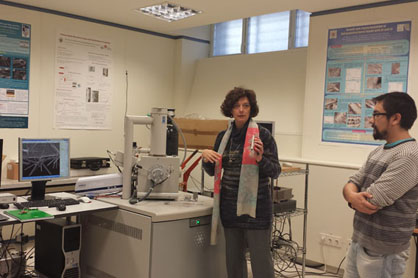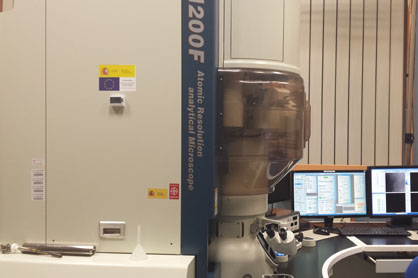In the search for the materials of the future
 Do you know that China has a monopoly in the export of the main element used in mobile screens or solar panels so the prices have soared in the last decade? A group or researchers from the Complutense University in Madrid are developing new ecofriendly materials, in collaboration with the Norwegian Institute for Energy Technology and with EEA Grants financing.
Do you know that China has a monopoly in the export of the main element used in mobile screens or solar panels so the prices have soared in the last decade? A group or researchers from the Complutense University in Madrid are developing new ecofriendly materials, in collaboration with the Norwegian Institute for Energy Technology and with EEA Grants financing.
09.12.2014
You may not have heard about indium tin oxide, but is one of the most widely used material as transparent conductive electrode. The reason is it exhibits simultaneously good electrical conductivity and transparency, something quite rare. It is used in flat displays, touch screens and other energy conversion systems as batteries. The problem? The low availability and export restrictions imposed by the major worldwide distributor, China. For that reason, the European Union is fostering the search for new materials to substitute critical metals. Susox Project falls within this context. It is one of the selected research projects of coordinated mobility within the EEA Grants NILS Science and Sustainability programme, operated by Complutense University
Professor Ana Cremades, project promoter, explains that the main objective is “the development of new materials for energy related applications”. The project would contribute to the improvement of energy related devices, but also would have a beneficial effect on the climate-change fighting, improving our life quality and promoting the sustainable use of natural resources.
 “And, how this professor and her team of PhD teachers and students are developing these new materials? They are focused on the study of nanostructures “tuning the properties of materials”, whether it be changing slightly their composition or combining several materials. “We hope to achieve significant results and even some patents”, explains Professor Cremades. The Complutense University group is working with Norwegian Institute for Energy Technology, which is developing the theoretical model behind the experiments they are carrying out. Moreover, they have one of the two microscopes electronics of transmission with aberration correction in Spain, named JEM-ARM 200F, which allows to obtain chemical information with sub-Angstrom resolution.
“And, how this professor and her team of PhD teachers and students are developing these new materials? They are focused on the study of nanostructures “tuning the properties of materials”, whether it be changing slightly their composition or combining several materials. “We hope to achieve significant results and even some patents”, explains Professor Cremades. The Complutense University group is working with Norwegian Institute for Energy Technology, which is developing the theoretical model behind the experiments they are carrying out. Moreover, they have one of the two microscopes electronics of transmission with aberration correction in Spain, named JEM-ARM 200F, which allows to obtain chemical information with sub-Angstrom resolution.
This is a multidisciplinary project with experts from different fields such as nanoscience and nanotechnology, physics, chemistry or mathematical modelling. The results present interest for wide range applications on energy production and storage (solar cells, batteries..) and sensors. However, as Professor Cremades points out, “it is extremely tough to transfer university research to the business in Spain”. Nevertheless, they continue their effort and especially trying to attract European funds to this area of research.
Susox project meets NILS Programme objectives: to improve and to deepen academic research cooperation among Spain, Norway, Iceland and Liechtenstein, but also to have a positive impact on Earth. Through this Programme, EEA Grants support 80 research projects in areas such as biomedicine, mathematics or environment, and all of them have a Norwegian or Icelandic partner.